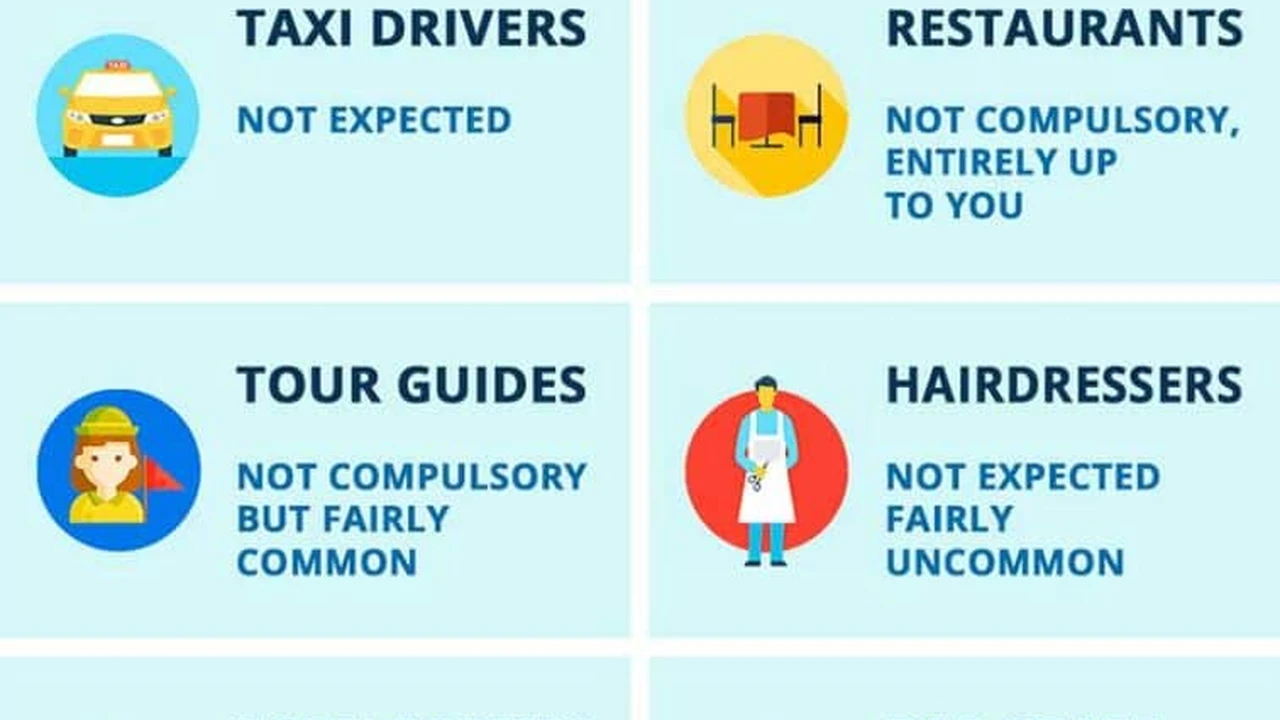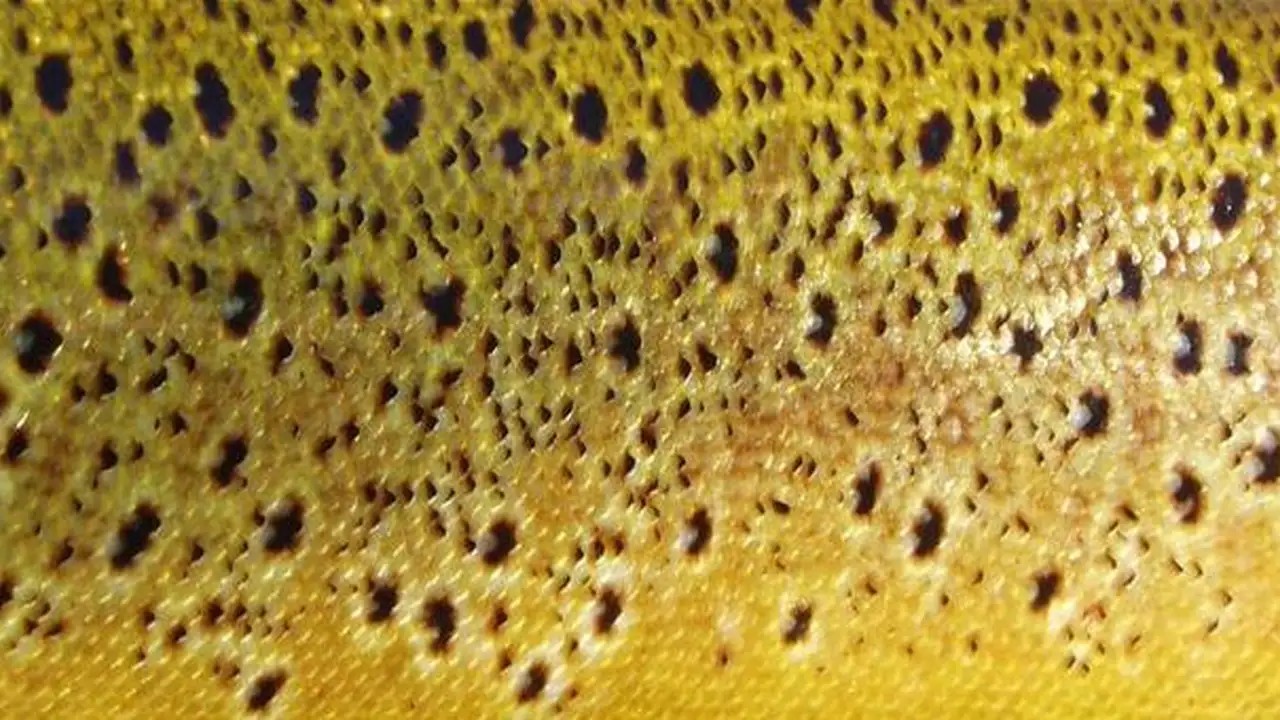Tipping in New Zealand: What You Need to Know
Sample meta description.

Understanding Tipping Culture in New Zealand A Guide for American Tourists
Alright, you're heading to New Zealand! Get ready for stunning landscapes, friendly locals, and... a completely different tipping culture than what you're used to back in the States. Forget those automatic 15-20% gratuities. Tipping in New Zealand isn't expected, and in many cases, it's not even common. Let's dive into the specifics, so you don't feel awkward or overspend during your trip.
Is Tipping Expected in New Zealand Restaurants and Cafes?
The short answer: No. Unlike in America, servers in New Zealand are paid a fair living wage. They don't rely on tips to make ends meet. So, when you're enjoying a delicious meal at a Kiwi restaurant or grabbing a flat white at a local cafe, don't feel obligated to leave a tip. The price you see on the menu is the price you pay.
That being said, if you receive exceptional service – maybe your server went above and beyond to accommodate your dietary needs, offered fantastic recommendations, or was just genuinely friendly and attentive – you're welcome to leave a small tip as a token of appreciation. But it's entirely your choice, and no one will bat an eye if you don't.
When Might You Consider Tipping in New Zealand? Scenarios and Etiquette
While tipping isn't the norm, there are a few situations where it might be appropriate to consider leaving a little something extra:
- Exceptional Service: As mentioned earlier, if someone provides truly outstanding service, feel free to show your appreciation.
- Tour Guides: If you're on a guided tour and your guide is knowledgeable, engaging, and makes your experience memorable, a tip is a nice gesture. Think about NZD $10-20 per person for a full-day tour.
- Taxi/Ride-Sharing: Tipping taxi or ride-sharing drivers isn't expected, but rounding up the fare or adding a small amount is perfectly acceptable if they provide excellent service, like helping with luggage or offering helpful local tips.
- Hotel Services: Tipping hotel staff, such as porters or bellhops who assist with your luggage, is also appreciated. A few dollars per bag is a standard amount. Housekeeping? Again, not expected, but if they've gone above and beyond, leaving a small tip at the end of your stay is a nice thought.
- Spas and Salons: Similar to restaurants, tipping at spas and salons isn't customary. However, if you're particularly pleased with your treatment, you can certainly leave a small tip.
How Much Should You Tip in New Zealand? Amounts and Guidelines
If you do decide to tip, there's no need to go overboard. A small amount is perfectly sufficient. Here's a general guideline:
- Restaurants/Cafes: Rounding up the bill or leaving a small amount (e.g., NZD $5-10) for exceptional service.
- Tour Guides: NZD $10-20 per person for a full-day tour, depending on the length and quality of the tour.
- Taxis/Ride-Sharing: Rounding up the fare or adding a few dollars.
- Hotel Services: A few dollars per bag for porters/bellhops.
- Spas/Salons: Rounding up the bill or leaving a small amount (e.g., NZD $5-10) for exceptional service.
Remember, these are just suggestions. The amount you tip is entirely up to you and should be based on the level of service you receive and your own personal preferences.
Payment Methods and Tipping Options in New Zealand
New Zealand is a very card-friendly country. You'll be able to use your credit or debit card almost everywhere. When it comes to tipping, you have a few options:
- Cash: The most straightforward way to tip is with cash.
- Card: Some establishments may have the option to add a tip to your card payment. Check the payment terminal or ask your server.
Keep in mind that some smaller establishments may only accept cash, so it's always a good idea to have some New Zealand dollars on hand.
Understanding New Zealand's Fair Wage System and Its Impact on Tipping
The reason tipping isn't expected in New Zealand is largely due to the country's fair wage system. New Zealand has a minimum wage that is significantly higher than in many other countries, including the United States. This means that workers in the service industry are paid a decent wage and don't rely on tips to supplement their income. This system promotes a more equitable distribution of wealth and reduces the pressure on customers to tip.
Cultural Differences in Tipping Etiquette Comparing New Zealand and America
The stark contrast in tipping culture between New Zealand and America can be attributed to a few key factors:
- Wage System: As mentioned earlier, New Zealand's fair wage system is a major factor.
- Cultural Values: New Zealand culture values equality and fairness. Tipping can be seen as creating a hierarchy between the tipper and the recipient.
- Service Expectations: In New Zealand, good service is considered part of the job, not something that needs to be rewarded with a tip.
Being aware of these cultural differences will help you navigate the tipping landscape in New Zealand with confidence and avoid any potential faux pas.
Must-Have Travel Products for American Travelers in New Zealand Gear Recommendations and Reviews
Okay, now let's talk gear! Packing the right stuff can make your New Zealand adventure even smoother. Here are a few recommendations, with price points and comparisons:
High-Quality Hiking Boots for Exploring New Zealand's Trails Hiking Boot Recommendations
New Zealand is a hiker's paradise! You'll need sturdy, waterproof hiking boots. Here are a few options:
- Merrell Moab 2 Mid Waterproof: A classic, reliable choice. Great for day hikes and moderate trails. Price: Around $100 USD. Pros: Comfortable, durable, waterproof, good value. Cons: Can be a bit bulky.
- Salomon X Ultra 4 Mid GTX: A lighter, more agile option. Excellent for technical trails and backpacking. Price: Around $150 USD. Pros: Lightweight, waterproof, excellent grip, good support. Cons: More expensive than the Merrell Moab.
- KEEN Targhee III Mid Waterproof: A wider fit option, perfect for those with wider feet. Durable and comfortable. Price: Around $135 USD. Pros: Comfortable for wide feet, durable, waterproof. Cons: Can be a bit heavy.
Usage Scenario: Hiking the Tongariro Alpine Crossing, exploring Abel Tasman National Park, or tackling any of New Zealand's stunning trails.
Universal Travel Adapter for Charging Your Devices Power Adapter Guide
New Zealand uses Type I power outlets (230 V, 50 Hz). You'll need a universal travel adapter to charge your devices. Here are a few options:
- BESTEK Universal Travel Adapter: A popular and reliable adapter with multiple USB ports. Price: Around $25 USD. Pros: Compact, multiple USB ports, surge protection. Cons: Can be a bit bulky for some outlets.
- Epicka Universal Travel Adapter: A smaller and more compact adapter with a built-in fuse. Price: Around $20 USD. Pros: Compact, built-in fuse, affordable. Cons: Fewer USB ports than the BESTEK.
- OREI World Travel Adapter Plug: Offers both surge protection and a power rating suitable for high power devices like hair dryers. Price: Around $30 USD. Pros: High power, surge protection, multiple country compatibility. Cons: More expensive.
Usage Scenario: Charging your phone, laptop, camera, and other electronic devices in your hotel room or at cafes.
Portable Power Bank for On-the-Go Charging Mobile Charging Solutions
When you're out exploring, a portable power bank can be a lifesaver. Here are a few options:
- Anker PowerCore 10000: A compact and lightweight power bank that can charge your phone multiple times. Price: Around $25 USD. Pros: Compact, lightweight, affordable. Cons: Slower charging than some other options.
- RAVPower 20000mAh Portable Charger: A larger power bank with more capacity and faster charging. Price: Around $40 USD. Pros: High capacity, fast charging, multiple USB ports. Cons: Larger and heavier than the Anker PowerCore.
- Mophie Powerstation PD: Offers USB-C power delivery for faster charging of compatible devices. Price: Around $50 USD. Pros: USB-C PD, fast charging, sleek design. Cons: More expensive.
Usage Scenario: Charging your phone or camera while hiking, sightseeing, or traveling on long bus rides.
Waterproof Dry Bag for Protecting Your Valuables Rain Protection Gear
New Zealand weather can be unpredictable! A waterproof dry bag is essential for protecting your valuables. Here are a few options:
- Sea to Summit Lightweight Dry Sack: A lightweight and durable dry bag that's perfect for keeping your phone, camera, and other valuables dry. Price: Around $20 USD. Pros: Lightweight, durable, waterproof. Cons: Can be a bit slippery when wet.
- Earth Pak Waterproof Dry Bag: A more heavy-duty dry bag with a shoulder strap. Price: Around $30 USD. Pros: Durable, waterproof, shoulder strap. Cons: Heavier than the Sea to Summit dry sack.
- Skog Å Kust DrySak Waterproof Floating Dry Bag: Features a phone case, and can float. Price: Around $40 USD. Pros: Waterproof, can float, includes phone case. Cons: More expensive.
Usage Scenario: Kayaking, hiking in rainy weather, or protecting your valuables on boat trips.
Sunscreen with High SPF for Protecting Your Skin Sun Protection Essentials
The New Zealand sun is strong! Protect your skin with a high-SPF sunscreen. Here are a few options:
- Neutrogena Ultra Sheer Dry-Touch Sunscreen SPF 55: A lightweight and non-greasy sunscreen that provides excellent protection. Price: Around $10 USD. Pros: Lightweight, non-greasy, affordable. Cons: Can leave a slight white cast on darker skin tones.
- La Roche-Posay Anthelios Melt-In Sunscreen Milk SPF 60: A more expensive sunscreen that's great for sensitive skin. Price: Around $35 USD. Pros: Great for sensitive skin, lightweight, non-greasy. Cons: More expensive.
- EltaMD UV Clear Broad-Spectrum SPF 46: Recommended by dermatologists, especially for acne prone skin. Price: Around $37 USD. Pros: Good for acne prone skin, broad spectrum. Cons: More expensive.
Usage Scenario: Spending time outdoors, especially during peak sun hours.
Navigating the New Zealand Dollar Currency Exchange Tips
Understanding the New Zealand Dollar (NZD) is crucial. Before you go, check the exchange rate. You can use online currency converters like Google Finance or XE.com. When exchanging money, compare rates at different banks and currency exchange services. Airport kiosks often have the worst rates. Consider using a credit card with no foreign transaction fees for purchases, but be aware of potential ATM fees if you withdraw cash. Notifying your bank of your travel plans is also a good idea to avoid any holds on your card.
Staying Connected Mobile Data and Communication Options
Staying connected is important. Consider purchasing a local SIM card upon arrival for cheaper mobile data. Vodafone and Spark are popular providers. Alternatively, check if your mobile provider offers international roaming plans. Free Wi-Fi is available in many cafes, libraries, and hotels, but it might not always be reliable. Portable Wi-Fi hotspots are another option, providing a secure and consistent connection for multiple devices.
Enjoying Your Trip to New Zealand
So, there you have it! A comprehensive guide to tipping and essential travel gear for your New Zealand adventure. Remember to relax, embrace the Kiwi culture, and enjoy the incredible scenery. You're in for an unforgettable experience!
:max_bytes(150000):strip_icc()/277019-baked-pork-chops-with-cream-of-mushroom-soup-DDMFS-beauty-4x3-BG-7505-5762b731cf30447d9cbbbbbf387beafa.jpg)






